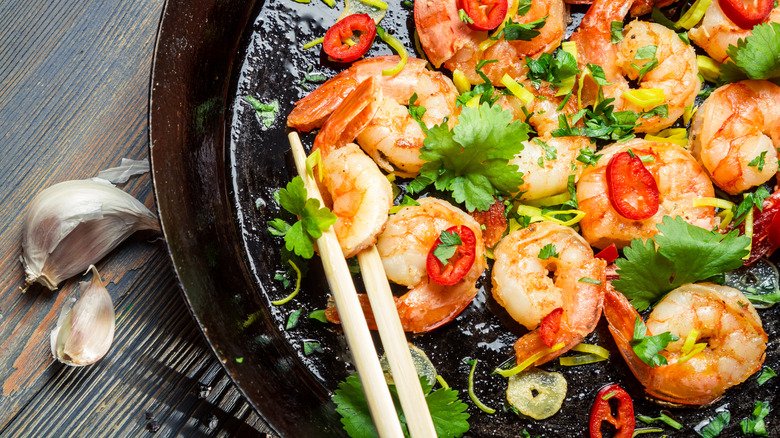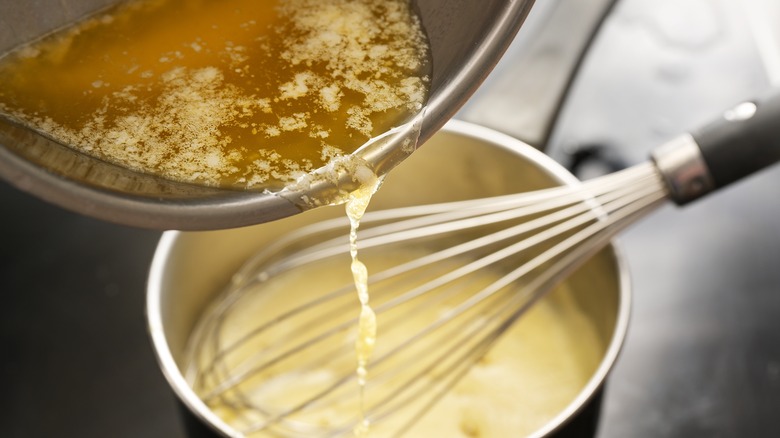Butter Is The Key To Elevating The Flavor Of Low-Dairy Dishes
Some folks were raised to think that butter equals bad-for-you, leading to so-called "better butter" substitutes. Fortunately, some butter myths have been dispelled simply by the fact that it's a natural food product made from churning milk. Anybody can do it in minutes by shaking milk in a jar or using a handheld vintage-style butter churn, readily available online, to paddle and churn milk or double cream into fresh, handmade butter for cooking.
That's good news not only for those luscious baked goods, which always taste better with butter, but also for myriad other dishes. It's easy to elevate the flavor of nondairy or low-dairy foods with a little pat or a big pile of melted, softened, room-temperature or chilled butter. Think outside the box to incorporate this dreamy, creamy ingredient into low-dairy soups, sauces, sautés, grilled meats, vegetable dishes, and just about anything for which you typically use oil.
It's a simple switch, but you do need to compensate for things like heat tolerance and recipe conversions. Just be aware that butter has a considerably lower smoke point than most cooking oils, meaning it will burn or turn brown more quickly. Keep the heat on low for stovetop cooking. When substituting butter for oil, it's typically best to melt the butter, let it cool, and then use the equivalent amount of melted butter in a 1:1 ratio. For example, if a dish requires a cup of oil, use a cup of the cooled-down melted butter.
Transform your cooking with butter
There are few limits to using butter in the kitchen, even on the stovetop, as long as you monitor heat levels. You don't want to deep-fry chicken strips in butter, but it's a breeze sautéing veggies, shrimp, or thinly sliced meats with it. Dishes prepared this way typically have no added dairy, so they lack the rich flavor brought by a warm-butter infusion. Since they cook relatively quickly even on low heat, butter has less time to scorch.
Soups get a big boost from even small amounts of butter, transforming both taste and texture. Creamy versions of soup often include dairy for thickening and flavor — not so for the light, nutritious, brothy ones we love. Non-dairy soups like lentil, barley, Italian minestrone, Mexican posole, and traditional chicken and vegetable are more robust and tasty with a tablespoon of butter. The same goes for tomato sauce. Tomatoes contain about 95% water, so it can be challenging to create hearty homemade sauces for your pasta and lasagna recipes — unless you bypass the typical oil in favor of taste- and thickness-enhancing butter.
Does butter work when grilling or baking nondairy or low-dairy meal components such as meats or meat-alternatives? Yes, but not how you might imagine. Though high grill and oven heats make butter less compatible for actual cooking, melted butter is perfect as a finishing oil to bring back moisture while injecting slightly sweet, velvety mouthfeels to your grilled steak, chicken, or veggie burgers.

